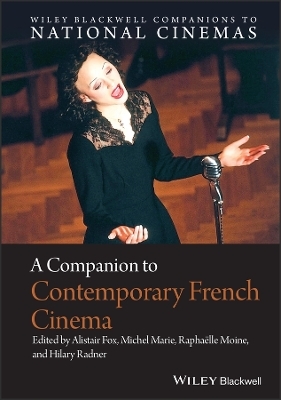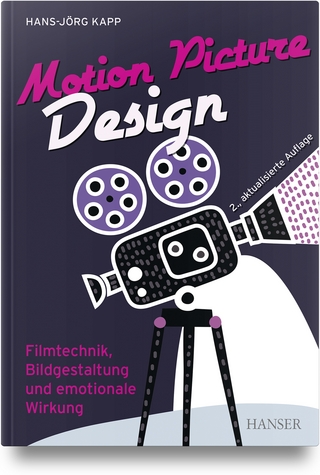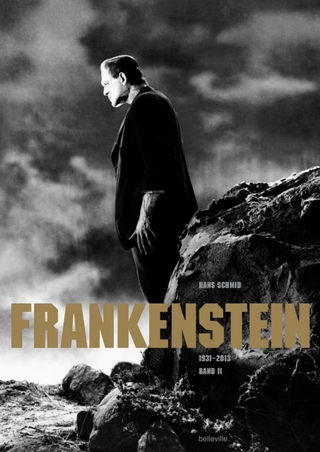
A Companion to Contemporary French Cinema
Wiley-Blackwell (Verlag)
978-1-4443-3899-7 (ISBN)
- Titel z.Zt. nicht lieferbar
- Versandkostenfrei innerhalb Deutschlands
- Auch auf Rechnung
- Verfügbarkeit in der Filiale vor Ort prüfen
- Artikel merken
Alistair Fox is Professor Emeritus at the University of Otago. His books include Jane Campion: Authorship and Personal Cinema (2011), New Zealand Cinema: Interpreting the Past (2011), and an English edition and translation of Anne Gillain’s François Truffaut: The Lost Secret (2013). Michel Marie is Professor Emeritus at l’Université Sorbonne Nouvelle Paris 3. His publications include The French New Wave: An Artistic School (1998, translated into English in 2002), Aesthetics of Film (with Jacques Aumont and Alain Bergala, 1983, translated into English in 2002), and Les Grands Pervers au cinéma (2009). Raphaëlle Moine is Professor of Cinema and Media Studies at l’Université Sorbonne Nouvelle Paris 3. Her publications include Cinema Genre (2002; translated into English in 2008), Remakes: les films Français à Hollywood (2007), and Les Femmes d’action au cinéma (2010). Hilary Radner is Professor of Film and Media Studies in the Department of History and Art History at the University of Otago. Her publications include Neo-Feminist Cinema: Girly Films, Chick Flicks and Consumer Culture (2011) and Feminism at the Movies: Understanding Gender in Contemporary Popular Culture (2011).
List of Contributors xii Acknowledgments xviii
Editorial Practice xx
Introduction: Contemporary French Cinema – Continuity and Change in a Global Context 1
Alistair Fox, with Michel Marie, Raphaëlle Moine, and Hilary Radner
Contexts: Institutional, Political, Cultural, and Economic 4
Characteristics of Contemporary French Cinema 4
Thematic Preoccupations 7
Trends, Developments, and the Future of French Cinema 10
Part I Economic, Institutional, and Political Contexts 15
1 The Political Economy of French Cinema: Attendance and Movie Theaters 17
Laurent Creton
Changing Patterns of Cinema Attendance 20
Cinematic Production and Its Outcomes 23
The Competitiveness of French Cinema and Market Share 25
Concentration and Diversity 30
The Transformation of the Pool of Theaters 32
The Future of Cinematic Theaters 35
2 “Do We Have the Right to Exist?” French Cinema, Culture, and World Trade 45
Jonathan Buchsbaum
France 49
Europe: Television Without Frontiers 51
Cultural Exception: GATT 56
Cultural Diversity: MAI/UNESCO 62
3 Historicizing Contemporary French Blockbusters 74
Charlie Michael
A Tentative Typology 75
“Cultural Diversity” or Cultural Crisis? 77
The Second Lang Plan (1989–1993) 79
The Maturation of a “Forced Marriage” 82
StudioCanal in the Crosshairs 84
A New Oligopoly? 87
4 Moving Between Screens: Television and Cinema in France, 1990–2010 96
Guillaume Soulez
The Role of Television in the Financing of Cinema 97
Arte as a Stimulus and Sponsor of the New Cinema 98
A Cinema of Collections 98
Realism and Television 100
The Revival of Documentary 101
Films/Telefilms: A Play of Mirrors 103
“Television Films” and Cinema Formatting 104
From Comic Television to Comedy in Cinemas 106
Cinema and Televised Series 109
5 Contemporary Political Cinema 117
Martin O’Shaughnessy
Taking Stock: Working-Class Histories and the Exit from Fordism 118
Outsiders and Victims, Ethics and Politics 125
Political Effectiveness 131
New Departures? 133
6 Diasporic and Postcolonial Cinema in France from the 1990s to the Present 136
Will Higbee
Auteur-led Productions and the “Return” of the Political in Diasporic and Postcolonial Cinema Since the 1990s 139
From Margins to the Mainstream: Postcolonial Comedy and the Mainstreaming of Maghrebi-French Filmmakers in the 2000s 144
Memorializing Colonial History: From Neo-Colonial to “Counter-Heritage” Cinema 148
Return Narratives in Diasporic Cinema of the 2000s 153
Beyond Ethnicity? Reconfiguring Difference in Diasporic Cinema 154
Part II Auteurs and Auteurism 161
7 The Veterans of the New Wave, Their Heirs, and Contemporary French Cinema 163
Michel Marie
The Extraordinary Fecundity of the Veterans of the New Wave 163
The Quartet of Founding Members: Chabrol, Rohmer, Rivette, Godard 166
The “Left Bank” of the New Wave 173
A Problematical Legacy 177
Epilogue: The Enduring Influence of Bresson and Pialat 181
8 Was There a Young French Cinema? 184
Jacqueline Nacache
To What Does the Term “Young French Cinema” Refer? 185
The Arrival of the New Cinema 187
The Counter-Attack of Positif 190
Maturity and Defining Parameters 192
New Appraisals, New Perspectives 195
Consensus and Uncertainties 197
What Remains of the Young French Cinema? 198
9 Auteurism, Personal Cinema, and the Fémis Generation: The Case of François Ozon 205
Alistair Fox
Characteristics of Auteur Cinema 206
Categories of Auteur Directors 207
Auteurist Styles 208
Cinephilia and Its Influence 209
The Personal Dimension 210
The Functions of Personal Cinema 213
François Ozon: A Case Study 216
Symbolic Figuration and Ozon’s Personal Myth 217
The Common Denominator of the Cinéma d’Auteur 225
Part III Genres, Cycles, and Cinematic Forms 231
10 Contemporary French Comedy as Social Laboratory 233
Raphaëlle Moine
Popular, Local, and Starved of Affection 236
Bienvenue chez les Ch’tis, a Popular French Comedy 239
Comic Misadventures of Masculinity 243
The Emergence of Auteur Comedy 245
The Ambivalence of Auteur Comedy: Variations on Personal Relationships and Middle-Class Navel-Gazing 247
11 Between Tradition and Innovation: French Crime Films During the 2000s 256
Thomas Pillard
The Paradoxes of the American-style Thriller: Desire for a Globalized Cinema and Rejection of the “New Europe” 257
The Invention of a New Type of Transnational Crime Film 258
The “Last Combatant”: Defending French Identity in the Context of Globalization 260
The Ideological Conservatism and Pessimism of the “Old-style” Film Noir: Cinematic Nostalgia and Suffering Men 262
The Perils of Modern Capitalism and Supermodernity in the Social Crime Film: Between Documentary and (Masculine) Tragedy 266
12 Contemporary French Horror Cinema: From Absence to Embodied Presence 275
Guy Austin
The Place of Genre in French Cinema 276
French Horror since 2000 277
Horror and the Body 279
Historicizing Horror 280
The Cutting Edge of Horror Spectatorship 284
13 The Historical Film and Contemporary French Cinema: Representing the Past in the Present 289
Hilary Radner
Genre, the Historical Film, and Historical Thinking 290
The New History Film 292
From Heritage Film to Biopic 293
The Historical Film: Moving into the Twenty-First Century 295
Sensationalism: The Spectacle of History 297
The Age of Individual Moral Choice 301
Collective Memory and Twentieth-Century History 302
The Biopic and the Cult of the Individual 305
14 Major Stars, the Heritage Film, and Patrimonial Values in Contemporary French Cinema 314
Gwénaëlle Le Gras
French Heritage Stars: Trends and Parameters 315
Responding to the Contemporary Sense of Crisis 319
Bridging the Gap between Auteur Cinema and Commercial Cinema 322
A Reaction to the Disappearance of the Classical Star System 324
Countering the Supremacy of Hollywood 325
The Younger Generation and the Uncertain Future of the Heritage Solution 328
15 French Animated Cinema, 1990 to Present 333
Richard Neupert
Michel Ocelot’s Model for Feature Film Production 334
Toward a “New Wave” of French Animation 340
French Animation: 2011–2012 346
16 Contemporary French Documentary: A Renaissance, 1992–2012 356
Alison J. Murray Levine
What is a Documentary? 357
The Market for French Documentary: A Deceptive Renaissance? 359
Recent French Documentaries: People, Subjects, Forms 361
Webdocs and the Future of Documentary 370
Part IV Gender and Sexuality 377
17 Pitiful Men, Instrumental Women: The Reconfiguration of Masculine Domination in Contemporary Popular French Cinema 379
Geneviève Sellier
At the Top of the Box Office, a Gendered Asymmetry 380
1994: Women Become Visible, But at What Price? 382
2010: The Diversity of the Masculine, the Archaism of the Feminine 386
18 French Women Directors Since the 1990s: Trends, New Developments, and Challenges 399
Brigitte Rollet
Women’s Access to Filmmaking in France: Old and New Trends 400
Agnès Varda and The New Wave 402
The Generation of 1968 403
The Fémis Generation 406
Generation 2000 408
An(other) French Exception? Auteur Cinema / Popular Cinema 408
“New” Genres: Rom-Com 410
Queens of Comedy: The “Millionnaires” of the 2000 s 411
First Films: And After? 412
19 Modes of Masculinity in Contemporary French Cinema 419
Tim Palmer
Creating/ive Masculinity: The Artistic Agency of Emmanuel Mouret and Romain Duris 421
In the Wilderness: Atavistic Masculinity and the Cinéma du corps 424
The Refracted Man: Representations of Masculinity in Films by Women 429
20 Hors milieu: Queer and Beyond 439
Nick Rees-Roberts
Visible 442
Invisible 445
Relational 448
Cruising and Disorientation 450
Male Space 453
21 Sexually Explicit French Cinema: Genre, Gender, and Sex 461
Kelley Conway
Romance (Catherine Breillat, 1999) 465
Baise-moi (Virginie Despentes and Carolie Trinh Thi, 2000) 470
Choses secrètes ( Jean-Claude Brisseau, 2002) 474
Part V Continuities and Emerging Trends 481
22 Booking Passages: Adventures in Adaptation in Recent French Cinema 483
T. Jefferson Kline
Adaptations of Historical Novels 484
Adaptations of Foreign Novels 491
Adaptations of Recent Best-Selling French Novels 497
23 The Return of Theatricality in French Cinema of the 1990s: A New Imbrication of Comedy and Melodrama 507
Marguerite Chabrol
The Theatrical “Revival” 507
Context, Successes, Strategies: The Spectacular 508
Value Judgments: The Mingling of Categories 510
A Typology of Theatrical Films: Continuities and Innovations 512
The Place of the Spectator: Identification and Detachment 516
On “Pop” Cinema 517
Stereotypes and Performance 520
An American Approach? 524
24 Soundscapes of Loss: Songs in Contemporary French Cinema 527
Phil Powrie
The Contemporary Musical 528
Songs in Contemporary Non-Musical Films: Theoretical and Methodological Issues 530
French-Language Songs 532
English-Language Songs 535
The Final Song in French 539
25 From the Margins to the Center: French Stardom and Ethnicity 547
Ginette Vincendeau
Globalization and Diversity in Twenty-First Century French Stardom 547
Ethnic Casting: From the Margins to the Center 551
The “Trojan Horse” of Comedy 556
Trans-Ethnic to Color-Blind Casting: Erasure or Integration? 560
The Power of Global Celebrity Culture 565
26 An Invention with a Future: French Cinema After the End of Cinema 570
Martine Beugnet
Vintage Cinema 571
Only the Cinema 573
Animation Retro-Style 577
Twilight Visions 580
27 The Amateur in Cinema, in France, Since 1990: Definitions, Issues, and Trends 590
Roger Odin
Familial Space: The End of the Family Film 591
The Space of “Amateur Cinema” 594
The Space of “Different” Cinema 597
Amateur Cinema Recognized at Last: The Space of the Document 601
The Space of Everyday Communication: Beyond “Cinema,” the Language of Images and Sounds 606
List of Contemporary French Films Since 1990 Cited in this volume 612
Bibliography 631
Index 655
| Erscheint lt. Verlag | 30.1.2015 |
|---|---|
| Reihe/Serie | CNCZ - The Wiley-Blackwell Companions to National Cinemas |
| Verlagsort | Hoboken |
| Sprache | englisch |
| Maße | 178 x 246 mm |
| Gewicht | 1315 g |
| Themenwelt | Kunst / Musik / Theater ► Film / TV |
| Sozialwissenschaften ► Soziologie | |
| ISBN-10 | 1-4443-3899-4 / 1444338994 |
| ISBN-13 | 978-1-4443-3899-7 / 9781444338997 |
| Zustand | Neuware |
| Haben Sie eine Frage zum Produkt? |
aus dem Bereich


